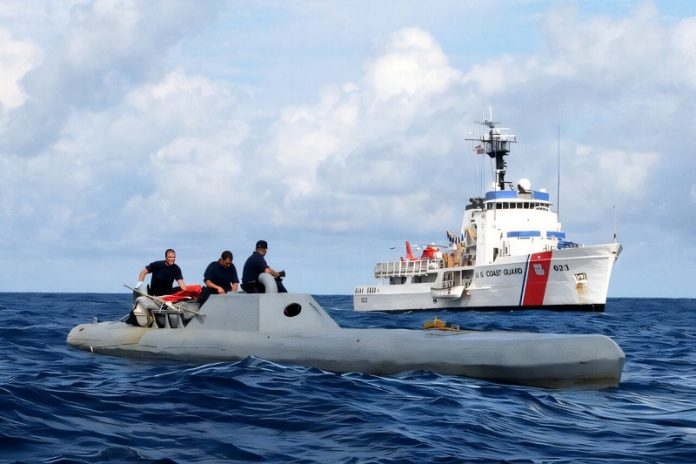
In a unique twist of inspiration, engineers at the University of Michigan are helping the U.S. Navy design futuristic ships that can skim quietly through the water and disappear into ocean waves—all based on techniques used by drug smugglers.
These low-profile vessels, known for moving undetected, are now being studied to create autonomous Navy ships that could carry supplies without risking lives.
At the heart of the project is a sleek, nearly 10-foot-long model ship being tested in the university’s massive 360-foot towing tank.
Its deck sits unusually close to the water, with only a few inches of hull visible above the surface.
This low positioning allows the vessel to “hide” behind waves, much like the real narco subs used to move illegal cargo undetected.
The U.S. Department of Defense is funding this research in hopes of both better detecting such stealthy vessels and designing their own versions.
These autonomous ships could carry out missions like resupplying troops or transporting equipment without needing a crew onboard.
The University of Michigan is one of the few places in the country with the facilities and expertise to test this type of advanced naval technology.
Eric Gimple, a recent master’s graduate in naval architecture and a Coast Guard veteran, is deeply invested in the project—not just as an engineer but also because of his personal connection. His father, Capt. Matthew Gimple, helped capture the first-ever narco sub at sea while serving in the Coast Guard. The mysterious vessel, long rumored but never seen in action, was nicknamed “Bigfoot.”
“I was really proud to follow my dad into the Coast Guard,” said Gimple. “So it felt kind of meant to be that I’d get to study the same kind of ship he used to chase.”
In the towing tank, the team loaded the model with different weights and sent it down the water track, through waves of varying sizes. The model was pulled using a large carriage system equipped with sensors to track forces acting on the ship. Lasers were also aimed at specific parts of the vessel to measure its motion as it cut through the water.
Unlike traditional ships that plow through the sea, sending up sprays of water, this vessel glided almost effortlessly. The bow wave was smooth, and waves quietly washed over the low deck without crashing or splashing. This efficient, stealthy movement could make such ships ideal for future Navy missions.
But there are challenges too. In some tests, the model rocked more than expected. This is likely because of the low amount of watertight space above the waterline, which normally helps keep ships stable. The next step is to run computer simulations to understand how larger versions would behave in rougher seas.
Project lead Professor Matthew Collette sees great potential in this research. “We’re taking something once used against us and trying to turn it into a benefit,” he said.
With continued testing, this stealth-inspired design could lead to a new generation of quiet, wave-slicing autonomous ships for the U.S. Navy.



